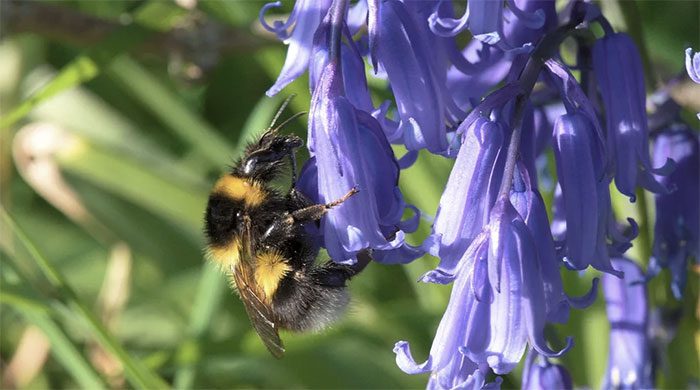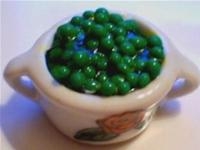Flowers have many ways to signal to insects which blooms contain pollen, such as through color, fragrance, and even electrical changes.
When pollinating insects land on a flower, they undertake a mission: to seek out sweet nectar to consume and collect nutritious pollen grains to bring back to their young.
But how do they know where to find the pollen?
Theoretically, this is quite simple: a flower emits tiny, fragrant pollen grains that the insects can see within their line of sight, guiding them to fly there immediately. However, the reality is much more complex.
Biologist Casper van der Kooi from the University of Groningen in the Netherlands, an expert in the evolutionary study of flower colors, states: “For plants, pollen is for reproduction. The purpose of producing this powder is to disperse the gametes or reproductive cells from one flower to another to create new life.”

Some bee species prefer purple over other colors. (Photo: Adrew Graham/Getty Images).
Plants that rely on pollinating insects do so for a reason. Producing pollen requires a significant amount of energy and nutrients, so if insects consume all the pollen or if the flowers encounter unsuitable pollinators, the energy expended by the plants for reproductive purposes becomes wasted.
Therefore, for most plant species, pollen is hidden, making it more challenging for insects to find it. However, plants cannot completely “hide” their pollen; otherwise, insects would stop visiting them.
<pThus, rather than signaling directly to insects, plants often use ambiguous signals to convey information so that insects can detect certain cues and decide which flowers to visit.
Visual signals are one of the primary forms of communication between plants and pollinating insects. Flowers come in various colors, and insects have an innate connection to vibrant hues.
Some flowers have nectar guides, which are patterns visible only in the ultraviolet spectrum, illuminating the pathways leading to nectar and pollen for insects to follow. Numerous studies indicate that these nectar guides and the coloration of flowers can change as pollen and nectar decrease; for instance, a five-petal flower can change color from yellow to red.
Fragrance also serves as a guide to the amount of pollen. Flowers release various chemical compounds into the air, and insects can pick up on these olfactory signals. Some plants can adjust the amount of chemicals they emit as an additional signal. For example, blueberry flowers have evolved to emit less fragrance after being pollinated.
Pollinating insects can also detect subtle signals. An intriguing example is the electric field. Flowers possess a weak electric field influenced by their shape. This electric field can be disrupted after an insect visits. Research has shown that honeybees and some other insects can recognize flowers that have lost their electric fields through specialized sensory hairs.
Ultimately, the way insects decide where to find pollen varies significantly depending on the characteristics of each species. Flowers can also evolve to establish suitable relationships with specific pollinating insects, influencing how these insects choose to seek out pollen.
Some flowers, such as dandelions, place their pollen in easily visible spots, attracting a wide variety of pollinating insects. In contrast, tomato flowers, which rely solely on bees for pollination, hide their pollen within their structures to attract only this particular insect.
Moreover, different insect species are attracted to different colors. For example, flies typically prefer yellow, while bees favor blue…
Even the decision regarding which flowers are most appealing can depend on individual insects. Each insect in a swarm may make different choices based on their experiences in the surrounding environment.




















































